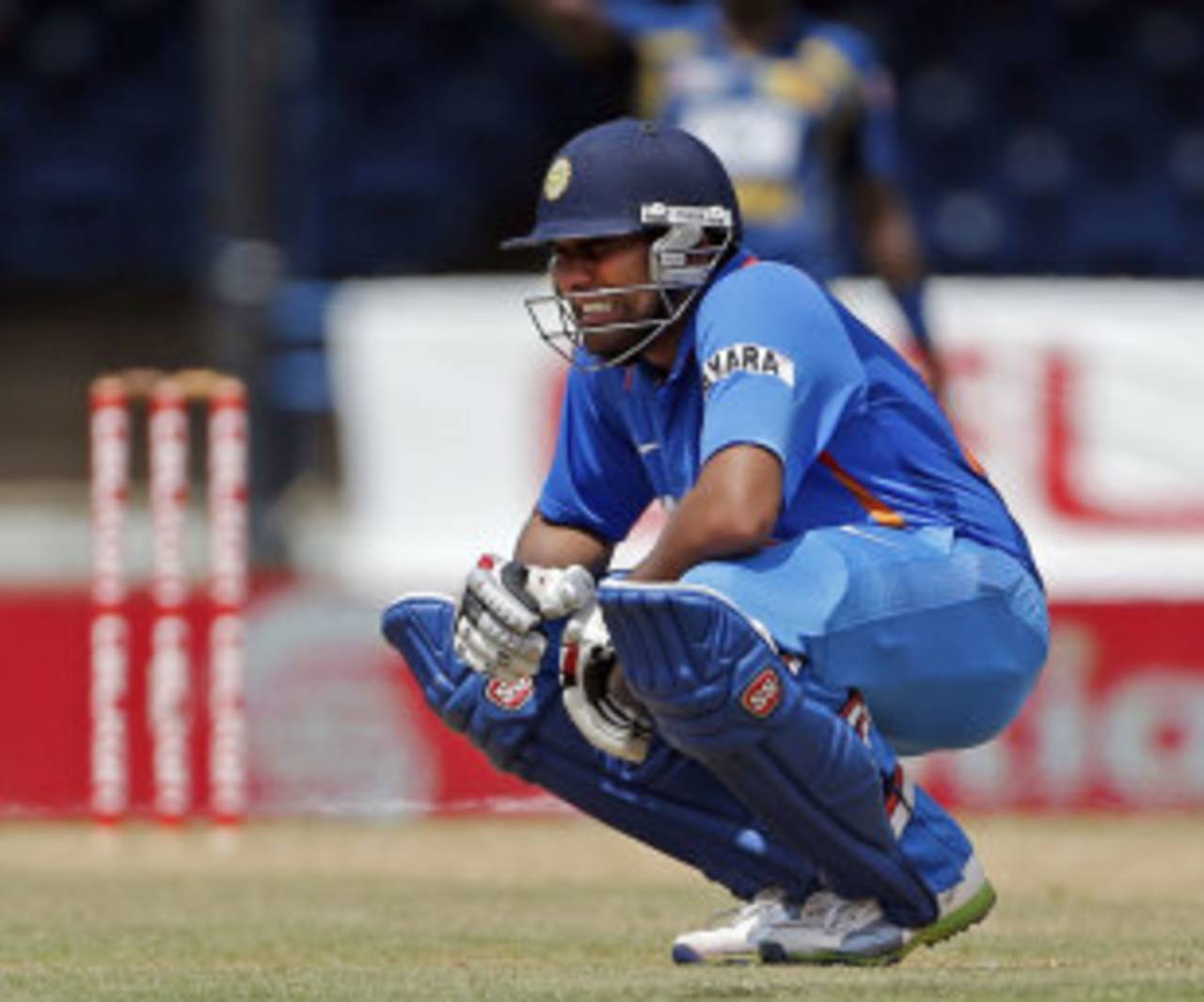Fourteen wickets fell on the first day of the Ashes. Though the pitch was dry, the overcast conditions helped seam and swing bowling, and the movement in the air and off the surface encouraged the quick bowlers to run in hard, over after over. It made the batsmen watchful and the contest even. However, despite the assistance for the bowlers, if the batsmen made the right shot selection, there were runs on offer.
Shift focus to the pitch that was prepared, or rather left under prepared, in Trinidad for the last league game of the tri-series, between India and Sri Lanka. It had plenty for everyone, except the batsmen. Not only was there exaggerated movement off the surface, but the bounce was so uneven that it bordered on dangerous. And if you thought batting would get easier against the spinners, you'd be wrong, because the ball played tricks for Rangana Herath and Ravindra Jadeja too.
The pitches at Queen's Park Oval have a reputation for assisting spinners. They are usually slow and without much grass. However, the surfaces for this tri-series not only have a lot of grass but also some moisture beneath. In fact, there are claims that this could be one of the grassiest pitches in the world at the moment.
One could live with the grass if it was evenly cut but there are tufts of varying length spread unevenly among the brown patches. The theory is that the tufts are a result of an uneven surface underneath, which results in uneven bounce. There's been a lot of monsoonal rain and the waterlogging on the ground could have raised the level of underground water. While the pitch is always covered to keep its surface dry, the rise in the water table ensures the soil underneath remains moist. It has made batting a painful exercise.
Batting usually involves trust and some guesswork. The moment the eyes see the ball has been released, the mind processes information based on years of practice to gauge the line, length, movement off the pitch and the bounce. The batsman has to process several variables in a short span of time, less than a quarter of a second in case of a fast bowler.
The ability to process such information quickly and accurately separates good players from the rest. But even the best batsmen get fooled now and then, for sometimes he either makes a mistake or the ball behaves differently. And if the ball starts misbehaving regularly, it makes a mockery of batting.
During the game between India and Sri Lanka on Tuesday, not only did the ball dart around after pitching the bounce was also quite unpredictable. If the bowler can't tell which way the ball going, what chance does the batsman have?
A little discomfort and the occasional ball misbehaving shouldn't be a matter of concern but if it happens frequently, it affects a player's safety. However, the variable bounce from the same spot in Trinidad differed by more than a foot and a half, making it almost impossible to deal with.
Imagine preparing to play the ball around the thigh but ending up fending it off the shoulder. Breaking fingers, wrist or elbow was a real possibility. No matter how tight the batsman's technique was he wasn't equipped to stay out of harm's way. The lateral movement was enough to leave the batsmen completely befuddled. Even the bowlers weren't 100% sure about what the ball would do.
It hasn't rained on the eve of the final and I hope the curator shaves off a little bit of grass. It's never a pleasing sight if the balance between ball and bat does not exist.
Former India opener Aakash Chopra is the author of Out of the Blue, an account of Rajasthan's 2010-11 Ranji Trophy victory. His website is here and his Twitter feed here
